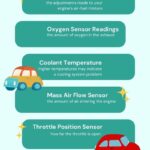OBD2 scanners have become indispensable tools for car owners and enthusiasts alike. These handy devices plug into your car’s OBD2 port and offer a wealth of information about your vehicle’s health. From reading engine codes to monitoring live data, OBD2 tools empower you to understand what’s happening under the hood. However, despite their impressive capabilities, it’s crucial to understand what OBD2 can’t do. Knowing these limitations ensures you use your OBD2 scanner effectively and seek professional help when necessary.
While OBD2 excels at providing standardized diagnostic information, it’s not a magic bullet for all automotive issues. One key limitation lies in the depth of diagnostic access. OBD2 systems primarily focus on emissions-related problems. This means they are excellent at detecting issues that could affect your car’s emissions, such as problems with the oxygen sensors, catalytic converter, or engine misfires. The standardized fault codes are designed to help mechanics quickly identify and rectify issues impacting air quality.
An OBD2 port is usually located under the dashboard on the driver’s side of most vehicles.
However, when it comes to more complex systems within your vehicle, OBD2’s capabilities become more restricted. For example, while an OBD2 scanner can often read basic transmission codes, it may not provide the detailed, manufacturer-specific information needed to diagnose intricate transmission problems. Similarly, issues within systems like ABS (Anti-lock Braking System), SRS (Supplemental Restraint System – airbags), or advanced body control modules often require more sophisticated diagnostic equipment than a basic OBD2 scanner can offer. These systems frequently use proprietary codes and communication protocols that go beyond the standardized OBD2 parameters.
Another significant limitation of OBD2 is its lack of bidirectional control in most consumer-grade scanners. OBD2 is primarily designed for reading data. While some advanced and professional OBD2 tools offer limited bidirectional capabilities, the typical handheld scanner you might use is mostly for retrieving diagnostic trouble codes (DTCs) and viewing live data streams. Bidirectional control allows a technician to actively command components to perform actions – like activating a fuel pump, cycling ABS solenoids, or commanding the cooling fan to turn on – to further pinpoint problems. This level of interactive diagnosis is generally beyond the scope of standard OBD2 functionality.
Connecting a diagnostic tool to the OBD2 port allows for communication with the vehicle’s computer systems.
Furthermore, the accuracy and interpretation of OBD2 data depend heavily on the scanner and software being used. While the OBD2 standard ensures a base level of data consistency, the way this data is presented and analyzed can vary significantly. Entry-level, inexpensive scanners might only display generic code descriptions, which can be vague and require further research to understand fully. More advanced scanners, especially those used by professional mechanics, often come with extensive databases, manufacturer-specific code definitions, and guided diagnostic procedures that greatly enhance the usability and accuracy of the diagnostic process. Therefore, relying solely on a basic OBD2 scanner and generic app might not provide the comprehensive and precise diagnosis needed for all car problems.
Finally, it’s important to remember that OBD2 scanners are tools, not solutions. They provide valuable information, but they cannot fix your car for you. Misinterpreting OBD2 data or attempting repairs based on incomplete information can lead to further complications and expenses. While OBD2 empowers car owners to perform basic diagnostics and understand their vehicle better, it’s crucial to recognize when a problem is beyond the scope of DIY repair and requires the expertise of a qualified automotive technician using professional-grade diagnostic equipment.
In conclusion, OBD2 scanners are powerful tools for basic car diagnostics, particularly for emissions-related issues. However, they have limitations when it comes to diagnosing complex problems in systems beyond the engine and emissions, offering bidirectional control, and providing in-depth, manufacturer-specific data. Understanding what OBD2 can’t do is just as important as knowing what it can do. This knowledge helps you use OBD2 scanners effectively for DIY car care while recognizing when professional diagnostic services are necessary to ensure accurate diagnoses and effective repairs.
